Thunderbirds: Species Origin?
Posted by: Loren Coleman on June 26th, 2012
In response to Nick Redfern’s referring posting, regarding an Illinois Thunderbird eyewitness account, a sharp comment came in from steelcut: “Thunderbird is Gymnogyps californianus. So what?”
Is this simple answer on target?
Well, actually, let’s look at this.
Gymnogyps californianus is the California condor.
There are some distinctive descriptors that identify the California condor for birders and ornithologists. Two of the indicators are (1) the lack of white around the neck, and (2) the white underwing feathers. A third one, of course, is that California condors are restricted to a small range in California and New Mexico, with historical sightings in the Southwest, up the West Coast and perhaps throughout North America.
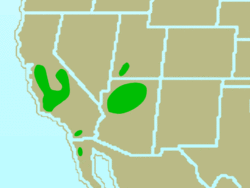
California Condor Range Map
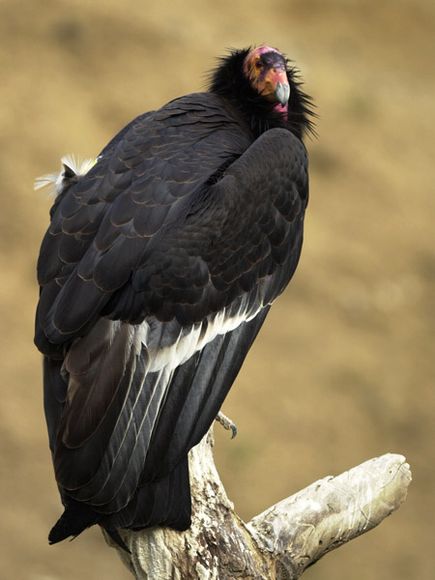

Two images, above, of California condors.
The California condor compared to the Andean condor is quite different. The Andean condors have (1) distinctive white neck feathers, and (2) no white underwing feathers. The Andean condors have a range in South America, especially up and down the Andes.

Andean Condor Range Map
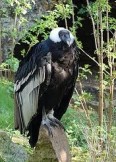
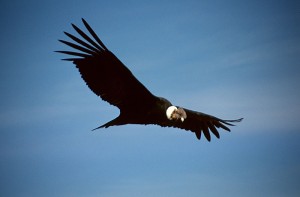
Two images, above, of Andean condors.
In the field, there is no mistaking California condors for Andean condors.
One of the closest eyewitness accounts of supposed Thunderbirds issued from the Lawndale, Illinois case. On July 25, 1977, as 10-year-old Marlon Lowe played outside his family home along open fields near Kickapoo Creek, near Lawndale, Logan County, Illinois, two giant birds passed over. One suddenly swooped down to grab the boy, carrying him a few feet before dropping him, apparently because of his frightened mother’s screams.
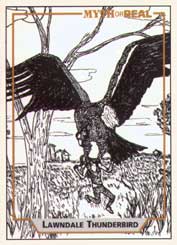
Drawing of the Lawndale Thunderbird by Jerry Coleman, based on the eyewitness accounts, which he collected firsthand.
My brother Jerry within days, interviewed Marlon Lowe and his family. I was able to return with Jerry in 1979, to revisit and re-interview the family.
Here is Jerry’s summary of Ruth Lowe’s first description of what she said of the appearance of the Lawndale birds: “It had a white ring around it’s half foot long neck. The rest of the body was very black. The birds bill was six inches in length and hooked at the end. The claws on the feet were arranged with three front, one in the back. Each wing, less the body, was four feet at the very least. The entire length of the birds body, from beak to tail feather was approximately four and one half feet.”
From the beginning, the Lawndale Thunderbird was compared to an Andean condor, a species that does have the white ring of feathers around the neck and what would look like a black body from a ground to sky sighting
. For more, see here.
Mark A. Hall and I have written of the possibility that North American Thunderbirds could be relict populations of Teratorns. We know from evidence at La Brea Tar Pits that humans and Teratorns were contemporaries.
The general thought is that the Pleistocene’s Teratorns, an extinct form of condors, looked more like Andean condors than California condors. Below are artist interpretations of what the Teratorns looked like, and the Teratorns are often a candidate for what the Thunderbirds might be. But bottomline, if the descriptions of the Lawndale Thunderbirds are any guide, while they might be Andean condors (Vultur gryphus) or, even zoologically radically, Teratorns (Teratornis merriami), they most assuredly do not seem to be out-of-place California condors (Gymnogyps californianus).
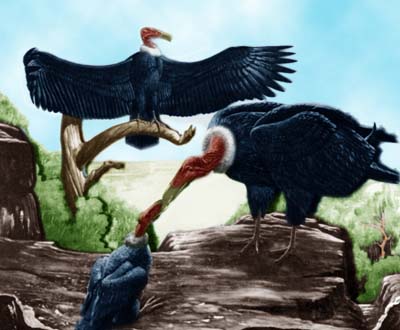
Credit: Mark Hallett, 1988.
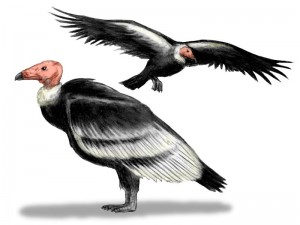
Credit: Nobu Tamura, 2007.
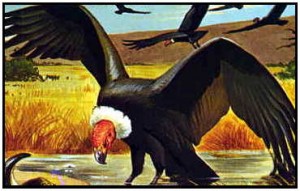
Teratons: Three images of how artists (based upon fossil evidence) speculated they appeared.
About Loren Coleman
Loren Coleman is one of the world’s leading cryptozoologists, some say “the” leading living cryptozoologist. Certainly, he is acknowledged as the current living American researcher and writer who has most popularized cryptozoology in the late 20th and early 21st centuries.
Starting his fieldwork and investigations in 1960, after traveling and trekking extensively in pursuit of cryptozoological mysteries, Coleman began writing to share his experiences in 1969. An honorary member of Ivan T. Sanderson’s Society for the Investigation of the Unexplained in the 1970s, Coleman has been bestowed with similar honorary memberships of the North Idaho College Cryptozoology Club in 1983, and in subsequent years, that of the British Columbia Scientific Cryptozoology Club, CryptoSafari International, and other international organizations. He was also a Life Member and Benefactor of the International Society of Cryptozoology (now-defunct).
Loren Coleman’s daily blog, as a member of the Cryptomundo Team, served as an ongoing avenue of communication for the ever-growing body of cryptozoo news from 2005 through 2013. He returned as an infrequent contributor beginning Halloween week of 2015.
Coleman is the founder in 2003, and current director of the International Cryptozoology Museum in Portland, Maine.










Some 20 years ago I saw an excellent documentary on the thunderbird on (I believe) the History Channel, tracing its possible relation to giant prehistoric species, and possible migration up from South America through the American south, and up into Illinois, where this encounter occurred. I’m sure you must have seen this, Loren (and perhaps you were even involved with it); if so, are you aware of where one might find a copy of it now (ideally online)?
About a year ago, I was jogging in a park in the middle of a clear, sunny day. A redtail hawk was circling very high overhead. I remember that about 4 or 5 times its shadow passed directly over me. I’m convinced it was doing it purposely as a sign of intimidation. But I also remember the bird’s shadow on the ground appeared much larger than the hawk would have been, making it even more intimidating. I can’t help but wonder if some of the exaggerated size descriptions we hear might be coming from the size of the shadow on the ground rather than the actual bird.
This depictions of teratorns are somewhat inappropriate, as they look nearly identical to modern condors. But teratorns were quite different in anatomy from condors, especially those of the skulls and beaks, and it´s not even that probable they had similar ways of life as scavengers. So there is not much reason to think they looked like giant condors at all, especially with a naked head and neck. Given the fact that even many living vultures with similar biology can look very different in colour, it´s quite unprobable that teratorns looked like giant condors.
The claws of most new world vultures are not strong enough to grab a kid…and not even to lift him into the air…
If you google “Teratorn skull”, (on google images), you can compare side-to-side teratorn and condor skulls. Teratorns skull is bigger and beak seems more robust…even menacing.
Were Teratorns really related with new world vultures? What were these teratorns, after all?
Thunderbirds remain a total mystery. I have seen a couple of purported “Thunderbird” giant black feathers on the web…I hope scientists can analyze them…
Best regards.
Here is the episode of “Animal X” that has the original footage that “Chief” A.J. Huffer supposedly took of the Illinois thunderbirds. The actual footage starts at about 7:20 and is shown off and on till about 8:48 (if you can get past the annoying, crazy-eyed “scientist”). Its hard to say how big they are because they’re up in the trees. Obviously they’re big birds and its interesting that this video was taken not too far from the Lawndale incident.
Ive seen the famous “Thunderbird pic” many talk about. It was nailed to a barn, with 2-3 men standing under it. looked huge! i remember as a kid, it scared the hell outta me. im sure one day a researcher will find this pic.